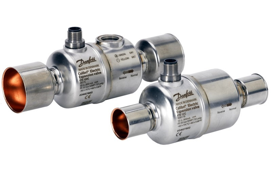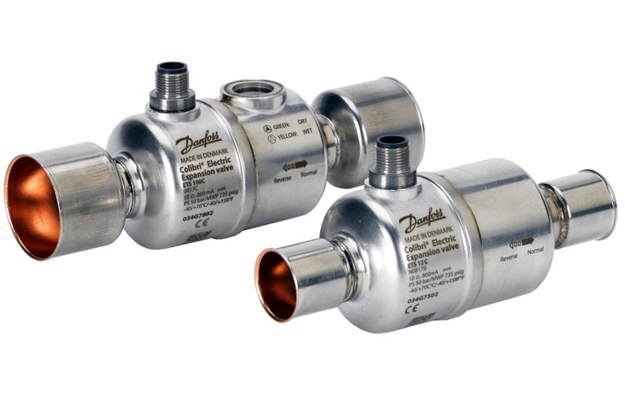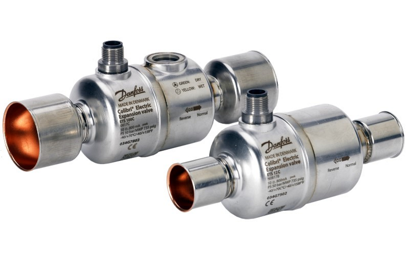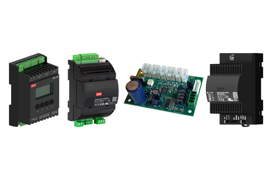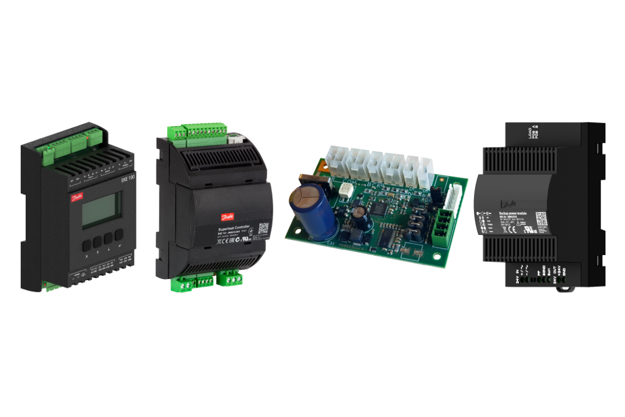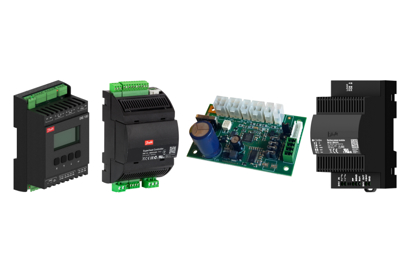The EKE superheat controller & Colibri expansion valve are the perfect combination to provide optimal superheat (SH) control for process cooling in the food industry. Good SH control is critical, because it maintains optimum evaporator performance for both energy efficiency and cooling.
One of the main challenges with blast chill or blast freeze in food process applications is the turndown ratio required in the cooling capacity from initial to final load at the target and holding temperature.
Here's a quick example:
To cool a product from 40°C to 2°C with an initial cooling load of 100 kW at 40°C and a holding cooling load of 20kW at 2°C, the refrigeration system would need to have capacity control to maintain the correct functionality from the maximum capacity through to the minimum capacity. One often overlooked area is the performance of the evaporator and control of the expansion valve across the whole duty/process time line.
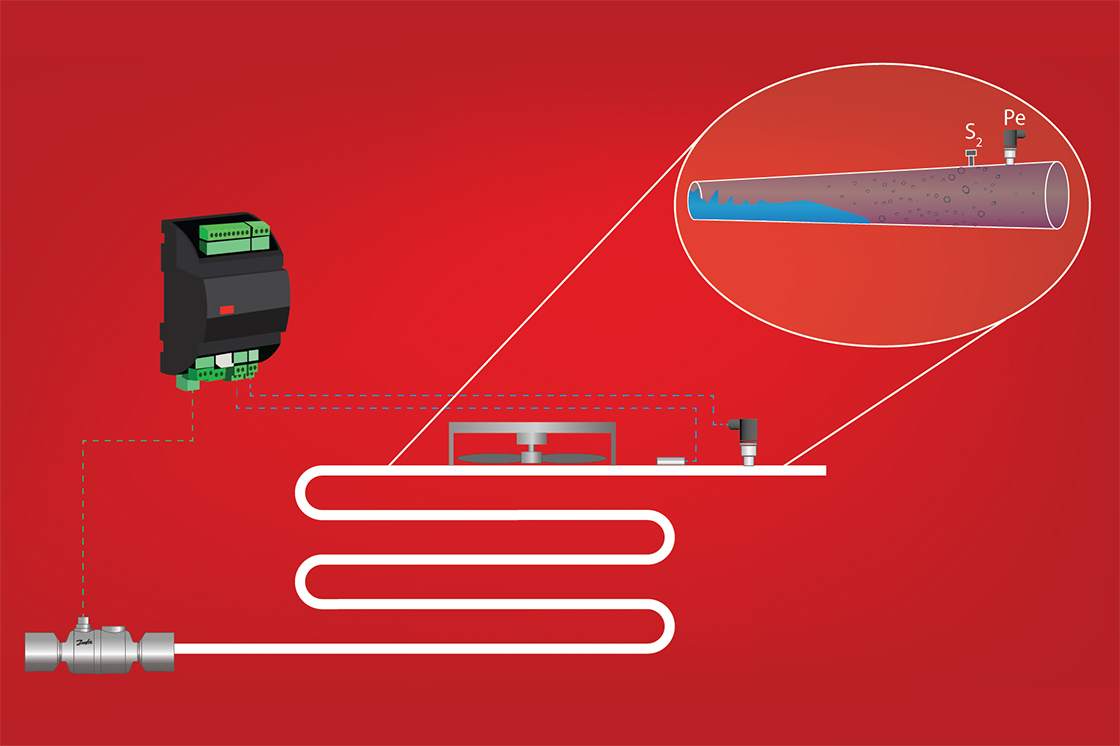
With a traditional thermostatic expansion valve (TEV), the turndown ratio is about 70% of maximum capacity, which leads to instability if the minimum cooling capacity is below this percentage — as is the case in the above example.
The benefits of combining an EKE and an electric expansion valve (EEV) are three-fold.
The first benefit is the ability to maintain the minimum stable superheat within the evaporator. Here's a quick break down
- When an evaporator is "under-filled" with refrigerant, the superheat signal is high and very stable at the outlet of the evaporator. Only a small area of the evaporator is utilized, resulting in degraded performance.
- When the evaporator is almost full, liquid drops of refrigerant will be present at the outlet of the evaporator and will present an unstable superheat signal. This will result in control hunting problems, which lead to degraded performance.
- If the evaporator is "over-filled" with refrigerant, liquid will flow back into the suction line, which will lead to degraded system performance and risk of damaging the compressor.
- This is the minimum stable superheat point. It ensures the evaporator surface is used to the greatest extent possible throughout the cooling process. This maintains the maximum filling of the evaporator surface with liquid refrigerant and maximizes performance, while providing compressor protection to ensure the refrigerant returning to the compressor will be vapor, not liquid.
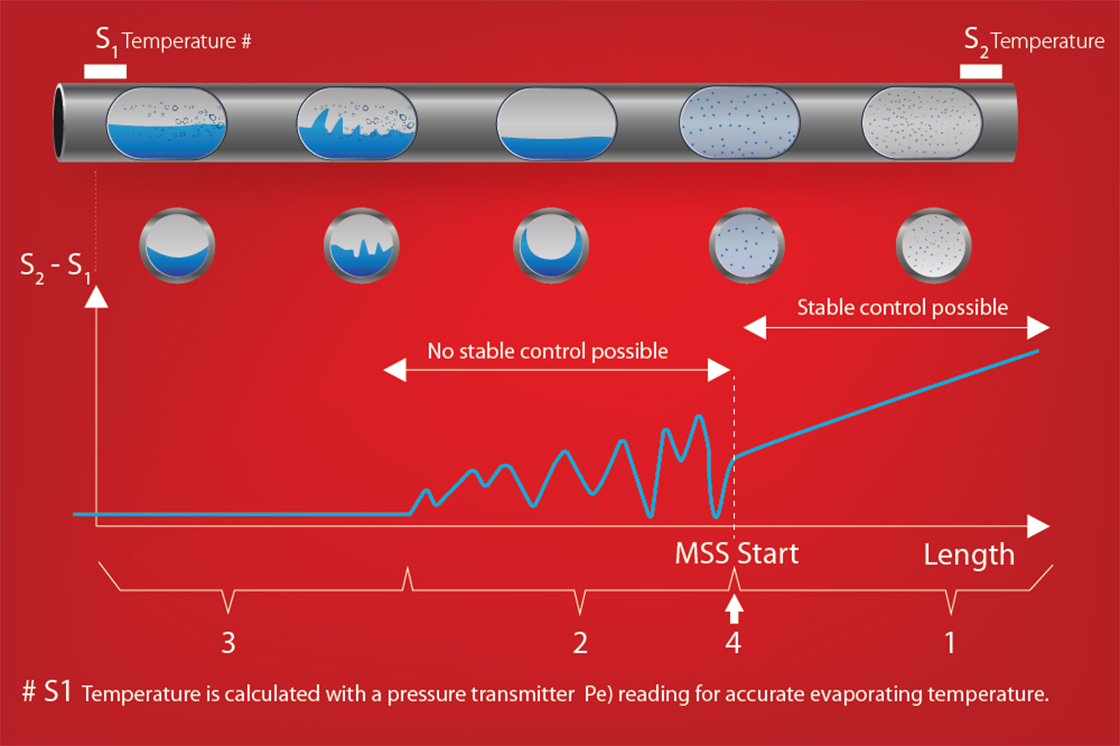
The second benefit is the ability of the Colibri EEV to have a stable turndown ratio of 90% from maximum capacity, allowing for a much greater range of capacity from a single EEV.
In practice, this means that the evaporator will maintain a minimum stable superheat across the entire cooling process, whether that is blast cooling, blast freezing, or refrigerated storage. This results in optimal evaporator performance and energy savings.
The third benefit is the ability of the EEV to operate independently of head pressure fluctuations. By installing or retrofitting EEVs, the restrictions on lowering condensing pressures are removed. The turndown rate of the Danfoss EEV means that, providing it has been sized for the lowest likely pressure drop, the valve will operate at any pressure drop over and above that. It is precisely this point that differentiates the EEV from its mechanical counterpart, which only operates effectively over a narrow pressure drop range.
The combined benefits make combining an EKE and an EEV an ideal solution to cool or freeze products effectively. Using the latest technology results in faster process times, repeatability, and increased reliability of the refrigeration equipment – at the most energy-efficient levels possible.
If you're ready to implement this solution, we're here to help. Refrigeration contractors can access the unrivaled support of Danfoss and our Partner Wholesaler Network, which includes application assistance, product selection, and onsite support.
Visit our EKE controllers and ETS Colibri product pages to learn more
-
if (isSmallPicture) {


 ETS Colibri® valve (ETS 12C-100C)
ETS Colibri® valve (ETS 12C-100C)ETS Colibri® is an electronic stepper motor valve. The valve has been designed for precise liquid injection into evaporators for air conditioning and refrigeration applications.
-
if (isSmallPicture) {


 Superheat controller and stepper motor valve drivers
Superheat controller and stepper motor valve driversIf you want precise control of superheat in your air conditioning system choose a reliable and effective superheat controller from Danfoss.

